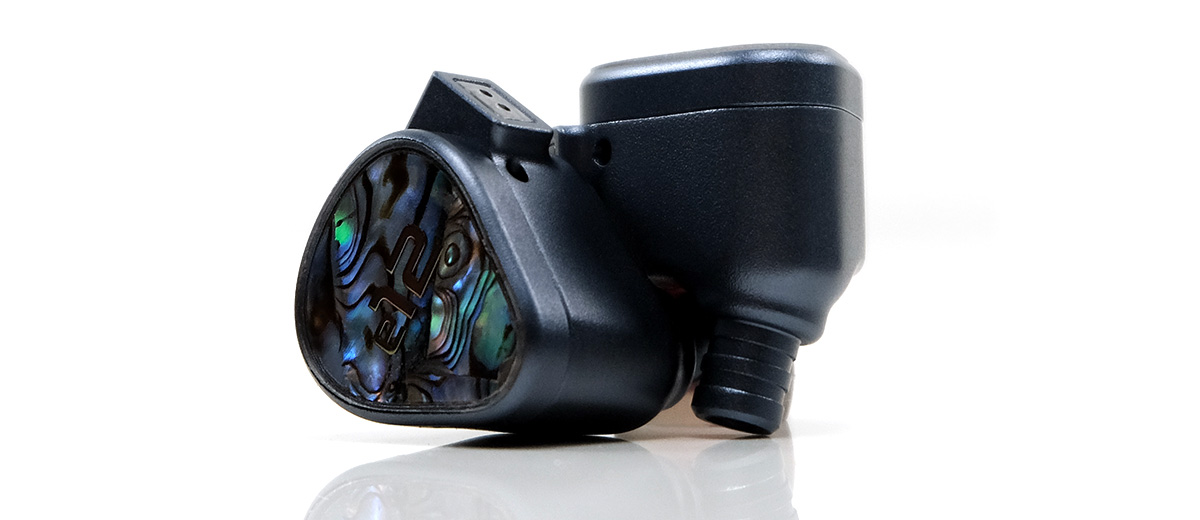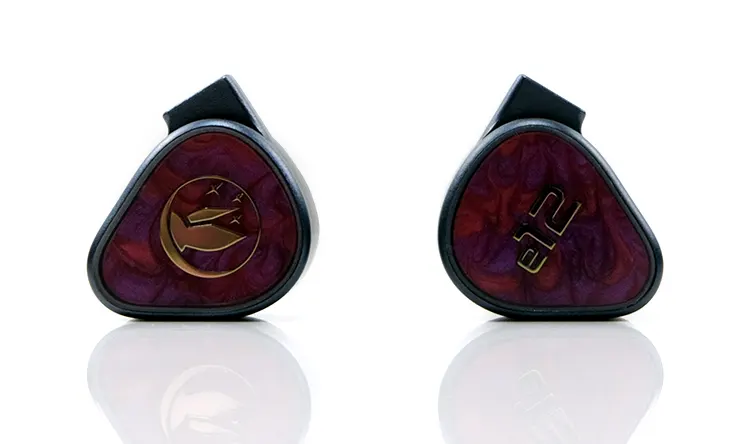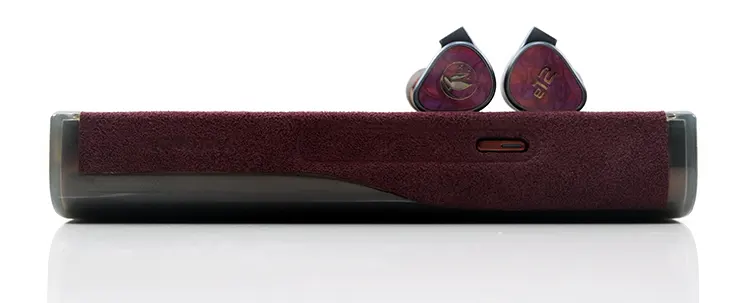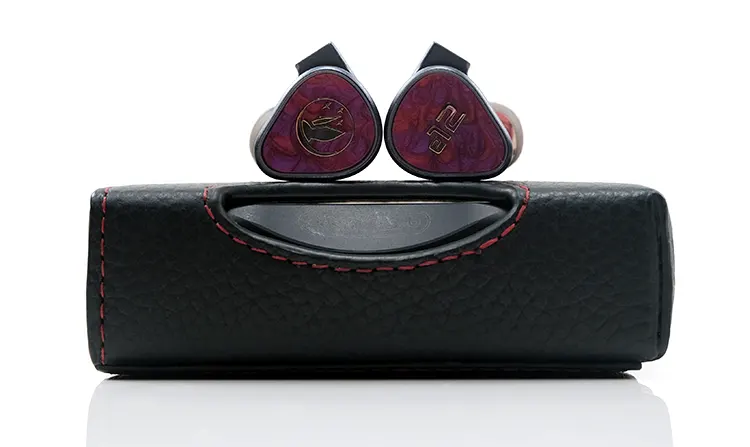Sound Impressions
The following sound impressions were completed using a mix of the iBasso DX320 MAX Ti and the HiBy R8 II DAPs in a balanced low-gain output mode. The e12 was fitted with the stock cable and foam tips.
Summary
The e12 is an explosive mix of power and clarity, spewing out some seriously visceral bass chops alongside a clean set of highs. This IEM does not hold back.
This is ironic considering some of the competing single dynamic driver IEMs I have reviewed recently have opted for a more ‘audiophile’ tuning. Not here, not the e12, it 100% leans on those core strengths of its driver, namely timbral coherence and a satisfying sub-bass response.
The funny thing was when I started listening to the e12 I knew this was a FIR Audio-tuned dynamic driver, at least for the lows.
It reminded me a lot of the first time I heard the custom Krypton 5 with that concussive, high-impact but beautifully defined bass performance. If there is such a thing as a signature bass response then FIR Audio has nailed it.
The general shape is V-shaped with some tonal contrast through the mids and upper bass. However, it’s one of the better V-shaped tunings out there with some requisite bumps in the mids to upper mids to produce a clear-sounding vocal presence to counter that huge power being generated from its lows.
The 2-5k range is largely north of neutral so it’s to the fore creating some nice stretch in the soundstage and keeping the mids from sounding annoyingly recessed. There is some peaking around 8k and just above 10k which will create some overtones on those upper-mids.
I found the treble a little sharp for my tastes with the stock silicone tips but just perfect with the foam tips. I will add that I preferred the e12 paired with a clean and dynamic-sounding source such as the iBasso DX320 MAX Ti which may well be a factor in my preference for the foam tips.
Frequency Response
The description of V-shaped might be doing the e12 a bit of a disservice considering most will immediately think recessed mids which is not the case here.
There is a dip below neutral from 500Hz to 1k but it’s not big enough to produce a frustrating loss of energy in that region. The lower-mids are a little leaner and slip in beyond the more pushed 2-5k region but the clarity in the lower-mids is still very impressive.
Especially so when considering the e12’s 20-100hz curve is quite elevated with the bass shelf energy petering out closer to 300-400Hz.
FIR has kept the potential for upper-bloom very controlled, especially when paired with a clean and dynamic-sounding source such as the R8 II or the DX320 MAX Ti. You get a lot of power but none of the mush and bloat an extended shelf might bring.
The area where some might have a slight difficulty is the peaking at 5k and some of the upper treble energy around 8-10k which dominates a lot of the e12 upper mids and treble coloration. It does help to keep everything clean and clear but with the wrong tips, it might stray into bright or hard-edged.
Timbre
The e12 timbre is more to the neutral and clean side with a brilliant fundamental mixed in with high levels of contrast through the mids. I suspect this blend helps keep the e12 performance clear without losing the sub-bass’s impressive level of power.
It’s not as warm as the HIFIMAN RE2000 or the cheaper Softear’s Twilight but I think that helps the lower-mids retain its clarity relative to the strong sub-bass presence.
As such the general note tone from the e12 is very strong on the lowest fundamental order with a slight bias to clear upper-order harmonics and less even-harmonic based.
Not that the tone is digital or dry, far from it, the e12 still has some very dynamic driver traits with its natural decay and slightly analog sound overall. Rather, it’s not a wet or liquid-like coloration. The best phrase I can give it subjectively is that this is a ‘taut tone’ with bags of energy.
Sources will play a role here in the final output. I biased to a clean source with good dynamics to get the e12 bass as articulate and defined as possible. It does come at the cost of stiffening the presence of the highs and a slightly lighter and brighter midrange timbre.
If you want a smoother tone in the vocal or upper-mid percussion timbre then options such as the Cayin N7 or the FiiO M15s are more appropriate.
Staging & Dynamics
The FIR Audio e12 has plenty of staging strengths at the macro level with impressive depth, a decent treble extension, and a forward set of upper mids to counter the heavier lows.
The overall size is above average for me without sounding strongly holographic. It successfully avoids that typically diffused or narrow midrange presentation that more aggressive V-shaped monitors tend to exhibit.
Imaging here is impressive so, whilst not as articulate as a multi-BA, it’s not by any means sluggish, veiled, or smeared in its presentation of detail. The forward upper-mids will stretch the stage nicely giving you a bit of an intimate vocal quality that layers over a more arena-like dimension from the lows.
For general dynamic range, the better the voltage from your source or the more controlled and clear sounding it is the better the layering and perceived impact from the e12 bass becomes. Anything too soft or warm dulls the delivery on the lows and weakens one of the e12’s major strengths.
The lower-mids are probably the weakest in terms of imaging presence but not to the point where they sound diminished. The e12’s solid fundamental keeps the sound of lower register notes firmly weighted.
Synergy
Efficiency & Sensitivity
The FIR Audio e12 is rated at 16Ω and though the company never releases an SPL rating for their IEMs I can inform you that this is a relatively easy monitor to drive.
For a dynamic driver IEM, it’s certainly more sensitive than some of the competitors out there such as the HIFIMAN RE2000, qdc’s Dmagic 3D, and the Softears Twilight.
These three form the backbone of my page 3 comparisons and have SPLs as low as 116 dB/mW. None of them were more sensitive than the e12. In the case of the RE2000, it was almost double the volume on the HiBy R8 II low gain balanced output with Turbo mode on.
It does have some mild scaling properties but not a huge amount. It didn’t sound massively more resolving on the Ferrum OOR compared to the R8 II or even the Cayin N7.
The e12 will reflect some of the tuning properties of these paired amplifiers but otherwise, the best dynamic range and resolution for the e12 belongs in the portable class with the iBasso DX320 Max Ti rather than the OOR with an average DAC behind it.
DAP Pairings
I tested 3 DAPs with the FIR Audio e12 from the iBasso flagship DX320 MAX Ti, to the HiBy R8 II, and the Cayin N7. All of them were tested in low gain with a balanced 4.4mm connection.
I came away from that test session convinced that if the source and amplifier cannot get on top of the e12 lows and keep them tight then it’s not going to be the greatest of pairings.
For example, the N7 4.4mm PO sounded beautiful with the e12’s forward vocal imaging. Combined with the stock foam tips it’s a great pairing for keeping any potential edginess away from higher-pitched vocals.
However, the lows were a bit soft and perhaps too neutral in quantity. Given the e12 is tuned to highlight that tactile bass response other DAPs offered a more energetic set of lows consistent with the pitch.
The R8 II with its Turbo mode provided a noticeable lift but it was the DX320 MAX Ti pairing where the e12 sounded at its most dynamic on the lows. It’s a clean tone, though not too bright on the highs if you are using the foam tips.
The clarity and extension in the highs are improved over the more attenuated R8 II performance so if you are intent on using silicone tips and sensitive to treble this combination might not be for you. I would advise the R8 II or the N7. Both are more affordable and obtainable.
However, the payoff with the DX320 MAX Ti is a superb sub-bass extension and a very tight and well-defined bass note quality.
Dongle Pairings
I cheated a little here and threw the Chord Electronics Mojo 2 into the dongle mix because of the excellent e12 pairing performance relative to its cost compared to the above DAPs.
Consider the Mojo 2/e12 pairing performance closer to the R8 II sound than the N7 or the juicier, more analog coloration from the Cayin RU7 and HiBy FC6 dongles.
You get great dynamics, precise imaging, and that all-important level of control on the definition and pace of the low-end of that large 12mm driver. The staging is not quite as open as the R8 II through the mids, however, the clarity from the vocal performance was quite impressive.
There is no issue with power from the Mojo 2 and the background is very black for the most part.
The e12 is sensitive enough to pick up any stray EMI buzzes from your phone through the Mojo 2 as well as our tested dongles so that is the only real drawback I could note during my testing.
The three dongles tested included the Cayin RU7, the HiBy FC6, and the Luxury & Precision W2. The front runner was the RU7 which produced a surprisingly more energetic and better defined low-end than the usually juicy and weighted FC6.
The RU7 was also the smoother performer with the e12 through the mids and highs as well as offering a more open soundstage and improved stereo separation.
The FC6 is a little rougher on the edges with sibilance within a more intimate soundstage that did not sound as balanced and refined.
The W2 sat somewhere in-between both with a narrower soundstage on the e12 but very nice imaging and a polished treble with punchy lows.





